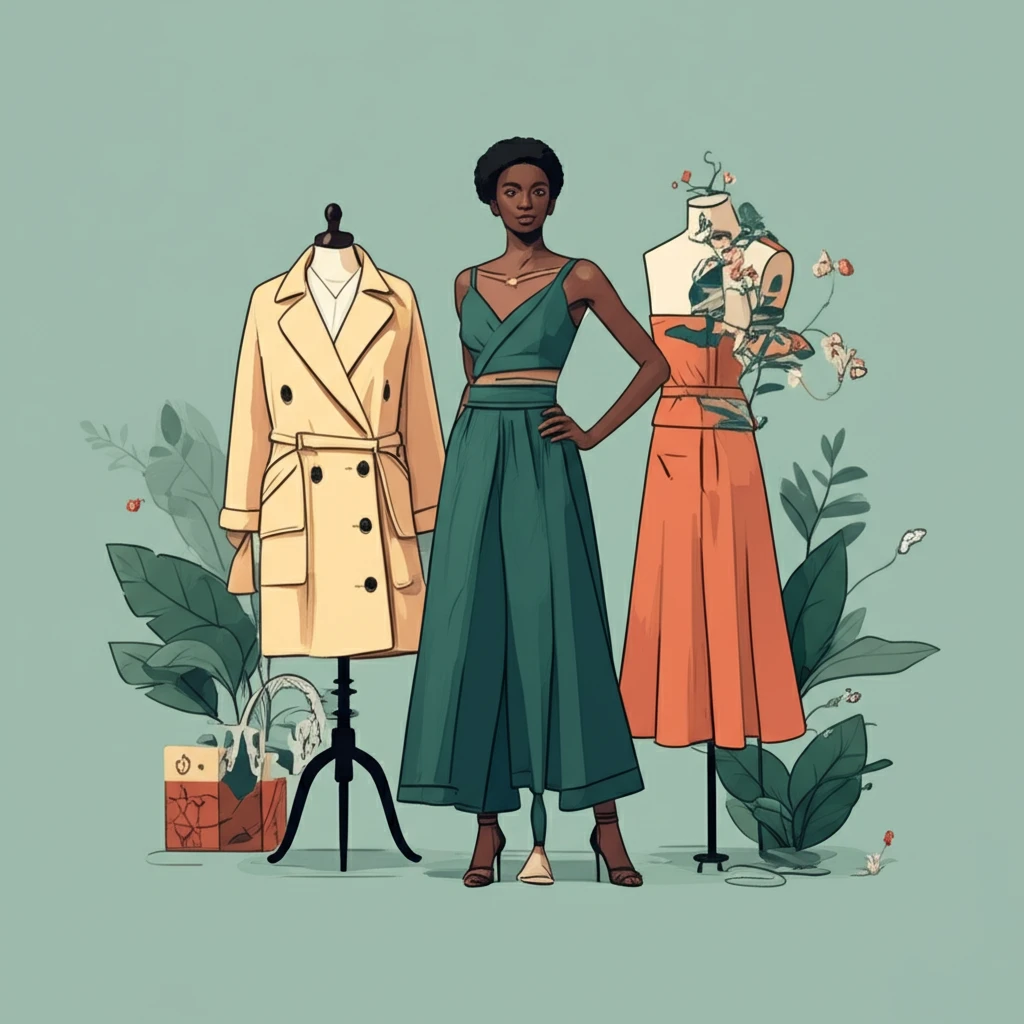Eco-Chic Future: Top 10 Sustainable Fashion Trends to Watch in 2025
As awareness of environmental impact grows, the fashion industry is undergoing a significant transformation. Sustainable fashion is no longer a niche concept but a mainstream movement, with consumers increasingly demanding ethical and eco-friendly choices. In 2025, we anticipate a surge in innovative trends that prioritize planetary health and social equity without compromising style. Join us as we explore the top 10 sustainable fashion trends set to define the year.
1. The Rise of Circular Fashion Models
Circular fashion aims to keep resources in use for as long as possible, extracting maximum value from them whilst in use, then recovering and regenerating products and materials at the end of each service life. This trend moves away from the traditional linear 'take-make-dispose' model.
What it Means:
- Examples: Brands offering take-back programs for old clothes, repair services, or clothing rental and subscription models.
- Practical Tip: Before buying new, consider renting for special occasions or exploring brands that offer robust repair guarantees and recycling initiatives for their products.
2. Advanced Material Innovation: Bio-Based & Regenerative Fabrics
Expect to see a boom in textiles derived from natural, renewable resources or those that actively improve ecosystems.
What it Means:
- Examples: Fabrics made from pineapple leaves (Piñatex), mushroom mycelium (Mylo), algae, orange peels, or regenerative cotton and wool that enhance soil health.
- Practical Tip: Look for labels specifying materials like 'organic cotton', 'TENCEL™ Lyocell', 'recycled polyester', or emerging bio-materials. Research brands committed to sustainable material sourcing.
3. Digital Fashion & Virtual Try-Ons
Reducing the environmental footprint of physical production and transportation, digital fashion is gaining traction, especially with Gen Z.
What it Means:
- Examples: Virtual clothing for avatars in metaverses, AR-powered try-on experiences for online shopping, or digital collections designed solely for social media.
- Practical Tip: Embrace virtual try-ons to reduce returns and ensure a better fit, thereby minimizing transport emissions. Explore digital fashion as a creative outlet.
4. Hyper-Local Production & Supply Chains
Minimizing carbon emissions associated with long-distance shipping, local manufacturing is becoming a priority.
What it Means:
- Examples: Brands sourcing materials and manufacturing within the same region or country, fostering local economies and reducing transportation costs and emissions.
- Practical Tip: Support local designers and boutiques. Check brand websites for information on their supply chain and manufacturing locations.
5. Transparency & Traceability Through Blockchain
Consumers want to know where their clothes come from and how they're made. Blockchain technology offers immutable records.
What it Means:
- Examples: Brands using blockchain to track garments from farm to factory to customer, verifying ethical labor practices and material authenticity.
- Practical Tip: Look for QR codes on garments or brand websites that provide detailed supply chain information. Demand transparency from your favorite brands.
6. Upcycling & Creative Repurposing
Giving existing garments and materials a new life reduces waste and conserves resources.
What it Means:
- Examples: Designers creating new collections from discarded textiles, vintage clothing, or transforming old clothes into entirely new designs.
- Practical Tip: Learn basic sewing skills to repair or alter your clothes. Participate in clothes swaps or support brands specializing in upcycled pieces.
7. Water-Saving Technologies & Dyeing Processes
The fashion industry is a major water consumer. Innovations are emerging to drastically cut water usage.
What it Means:
- Examples: Brands utilizing air dyeing, dry dyeing, or closed-loop water systems that recycle and reuse water in textile production.
- Practical Tip: Prioritize brands that highlight their water-saving initiatives. Choose denim that boasts low-water production methods.
8. Vegan & Cruelty-Free Alternatives Beyond Leather
The demand for animal-friendly fashion extends beyond traditional vegan leather to other innovative materials.
What it Means:
- Examples: Accessories and garments made from innovative plant-based leathers (e.g., cactus, apple, grape), bio-silks, or lab-grown alternatives.
- Practical Tip: Seek out certifications like 'PETA-Approved Vegan' and explore the growing range of high-quality, cruelty-free material innovations.
9. Durability & Timeless Design
Moving away from fast fashion, there's a renewed focus on quality, longevity, and classic styles that transcend seasonal trends.
What it Means:
- Examples: Brands offering investment pieces made with high-quality craftsmanship and materials, designed to last for years, if not decades.
- Practical Tip: Invest in versatile, well-made staples rather than chasing fleeting trends. Choose items that can be mixed and matched and worn across seasons.
10. Social Equity & Fair Labor Practices
Sustainable fashion isn't just about the environment; it's also about people. Ethical treatment of workers throughout the supply chain is paramount.
What it Means:
- Examples: Brands ensuring fair wages, safe working conditions, and empowering artisans in developing countries, often certified by third-party organizations.
- Practical Tip: Look for certifications like 'Fair Trade' or 'GOTS' (Global Organic Textile Standard) which encompass social criteria. Research brands' labor policies.
Conclusion
The landscape of fashion is rapidly evolving towards a more responsible and conscious future. In 2025, these ten trends will not only shape how clothes are made but also how we consume them. By embracing circularity, innovative materials, transparency, and ethical practices, we can all contribute to a more sustainable and stylish world. Making informed choices as consumers empowers this shift, proving that fashion can indeed be a force for good.
